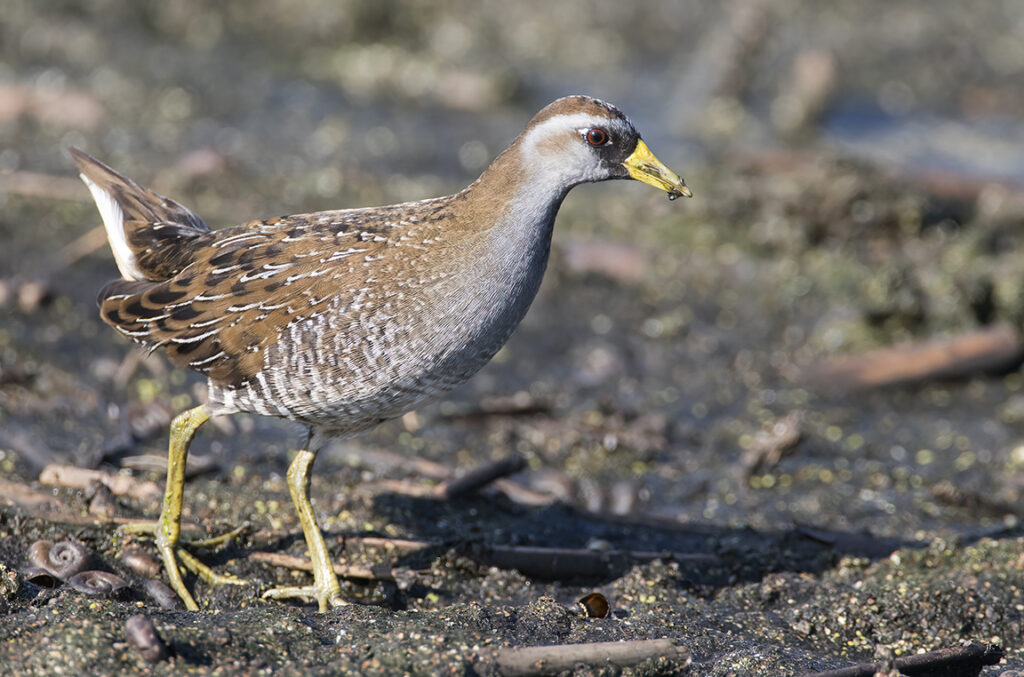
September 9, 2021 – Some strange sounds were coming from the cattails as I approached the edge of the slough, a startling communication among the shadow skulkers that slowly and eerily waned with each note. The distinct, loud, and familiar alarm calls from a well-hidden creature instantly conjured the vision of a small marshland bird common to this area during the warm months. The Sora is a water bird about the size of a robin, Soras nest in our area of Illinois from May through August. They build a woven platform nest out of grasses and cattails above the waterline, creating a kind of hollowed nest that adds protection from predators and the elements for about a dozen eggs. After some quiet and patient waiting time, on my part, some movement caught my eye among the shadowy cattail stalks just to my left. A juvenile Sora appeared and was foraging much like domestic fowl, plucking the ground as it cautiously moved in an unpredictable jerky and bobbing motion. The bird probed with its thick yellow bill into the soft, damp, ground watching and feeling for prey as it braved into the clearing. The flashy white stubby tail of the small bird would stand straight up at times as it stretched its neck to pluck a small worm or a tiny insect from the muddy earth. Soon three more Sora appeared; two adults and another juvenile wandered into the broken light and began their search for insects, seeds, tiny worms, and mollusks. As one of the juveniles worked its way across the open area, an adult squawked with a rapid, high-pitched call while running swiftly towards the juvenile bird, chasing the young bird around almost in circles until the intruder retreated into the cover of the cattails. Less than five minutes later, the scolded young Sora returned quietly out of sight of the adult to resume foraging. The small rails remind me of a miniature chicken, a bird that would not seem to be a strong flier. It is amazing that the Soras travel many hundreds of miles to their winter range along the coasts of the Gulf of Mexico and the marshes of Central America each fall and then return to the Midwest to nest in the spring.
